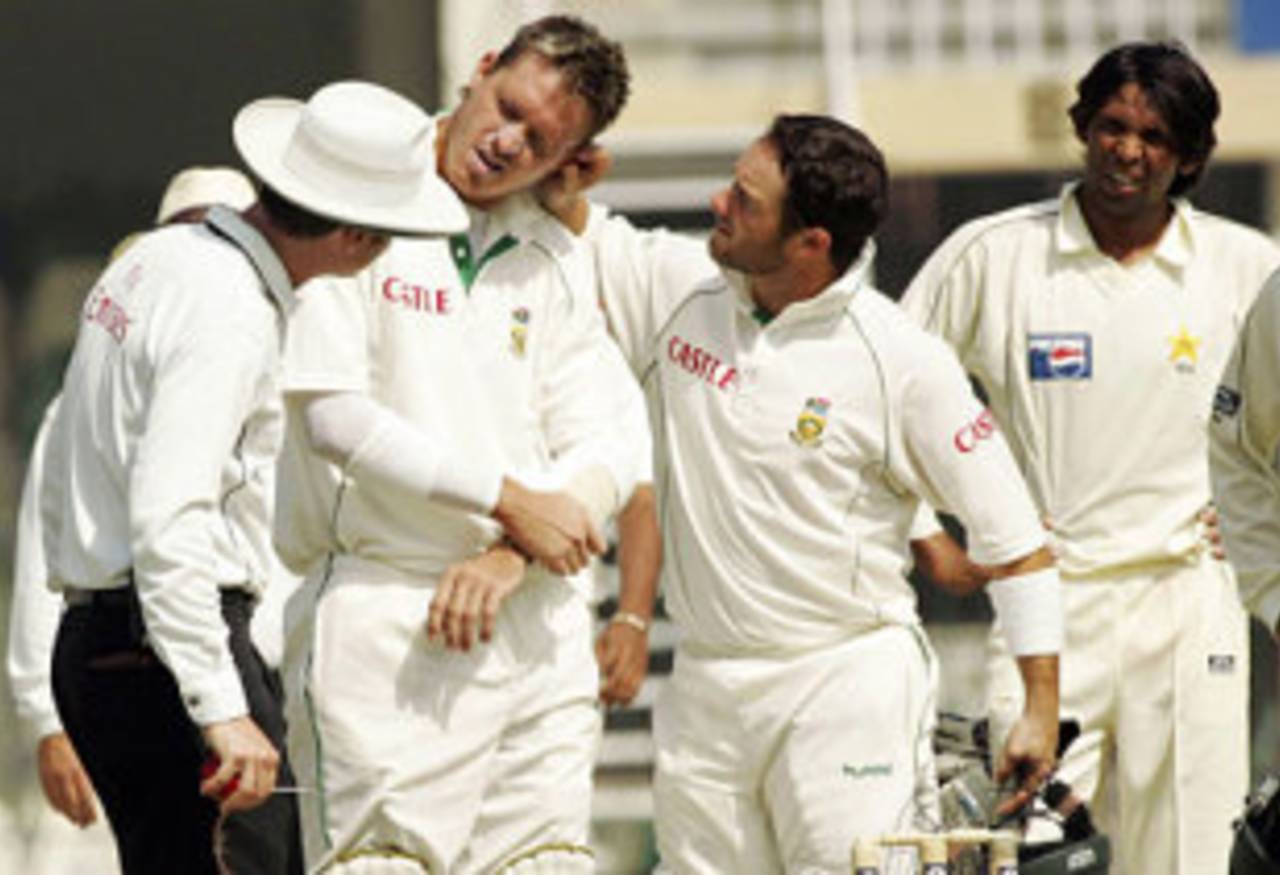Dear purist cricket-loving readers, I have, after much thought, rumination and many of those little chocolates with liquor inside them, figured out a way to save Test cricket.
No, it does not involve any of the usual ideas cited by experts: play it only on weekends so more people can attend, reduce ticket prices drastically to fill the stands, and of course, play in short, frilly skirts but without thigh-length tights like some sneaky field hockey players wear.
My solution involves one single device: the portable wireless microphone.
Let me explain.
A few days ago I attended a lecture conducted at a public library. I will not go into the details of the lecture as I do not want to come across as a culture snob. But if you insist, it was on the nature and veracity of competing dialectics in post-revolution Soviet architecture. (Dialectics is one of my great passions, along with margaritas.)
The first few moments were hilarious. A lady went up on stage, smiled at everyone, and then stood perfectly silent for one minute. As the seconds ticked by, she began to look increasingly agitated but unwaveringly patriotic.
It turned out the PA system had only been connected to her in-ear mike, and she had stood through the national anthem without realising that only she could hear it. It was the highlight of the evening.
As this fiasco was taking place, something struck me: this was the way to make Test cricket more watchable. Readers may already be familiar with how during some T20 broadcasts and the IPL, the TV commentators speak to players on the field via concealed in-ear microphones. They usually ask them exciting questions such as:
1. How do you think this match is going?
2. What is your opinion on the current state of this match?
3. Given what is transpiring on the field right now, what are your thoughts regarding the course of this fixture?
4. Thanks for talking to us, cricketer. What is your analysis of this game from your vantage point on the ground?
To which the player, pressed for time under the circumstances, usually summarises the situation as follows:
"Hello? Harsha, hello? Can you hear me? Hello? Arre, kya bakwaas hai, yaar..."
Currently this technique is only used in the relatively lighter formats. I suggest a radical rethink.
Henceforth, all players in Test matches must be wired to microphones. Any time the commentary team wishes, they will be allowed to activate these, to listen in to the on-field chatter or to communicate with any, some, or all the players.
At first glance this might seem of limited utility. But with a little imagination, the possibilities are endless. For instance, who hasn't wondered what batsmen talk about in the middle when they have their little meetings between overs? How wonderful it would be if we could witness the following exchange live:
Rahul Dravid: "How should we play the next over, Sachin?"
Sachin Tendulkar: "I am thinking of playing every ball on its merit. But you know how it is with me, I can even hit good balls for four. What about you?"
Rahul: "I am thinking of defending."
Sachin: "Wonderful. I hope I get a century."
Rahul: "I don't think so."
Sachin: "I know."
This will add a very attractive interactive dimension to five-day cricket.
Another problem with Test cricket is that sometimes you go to Lord's to watch an exciting England-India Test match and then sit the whole day watching Matt Prior face Ishant Sharma. Human life is too valuable to be spent like this. Instead, we can use the microphones to interact with jobless outfielders in engaging conversations, quiz competitions and reality shows. Just imagine the potential:
Harsha: "Prior defends that resolutely back to the bowler. Another good over from Ishant Sharma... Back to Siva's Dream Date."
Siva: "Hi, Suresh Raina at third man. Today I am an energetic single Indian girl living in New York. I love Japanese food, dancing, classical music and Bikram yoga. When I come back from a hot, sweaty yoga class, how will you cool me down?"
Raina: "Hi Siva, when you are hot and sweaty... WICKET! WICKET!!!"
Raina runs and jumps at Ishant Sharma, hitting him square in the groin
Yuvraj: "Siva, can I chip in?..."
Also, it is no secret that sometimes Test cricket is simply not challenging enough to be engaging. On the fifth day of a drawn Test between, say, England and Pakistan, where is the incentive to watch Stuart Broad bowl to Kamran Akmal? But imagine if the players have to also deal with distractions delivered via microphones?
Utter delight!
Just as Broad comes on to bowl, Arun Lal whispers into microphone: "Stuart Broad, who enabled a renaissance in Indian cricket by serving up an over of utter rubbish to Yuvraj Singh in 2007, is next."
Meanwhile, just as Kamran Akmal prepares to face:
Shastri: "Broad has been straight as an arrow this over. The run rate is climbing. What will Akmal do to the next ball?"
Akmal: "What do you want Akmal to do to the next ball?"
As you can see, I have returned joie de vivre to Test cricket with a single electronic device and without touching the fabric of this great format. I see no reason to not implement this immediately.
Sidin Vadukut is the managing editor of Livemint.com and the author of the novel Dork: The Incredible Adventures of Robin 'Einstein' Varghese. He blogs at Domain Maximus.
